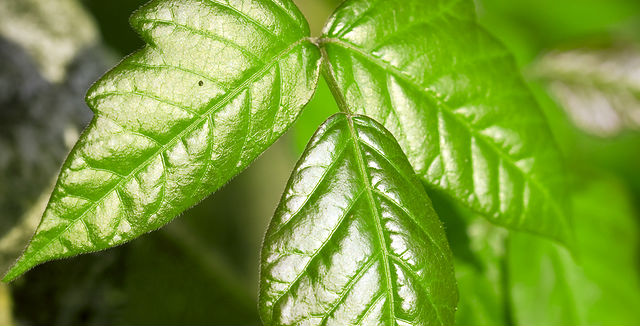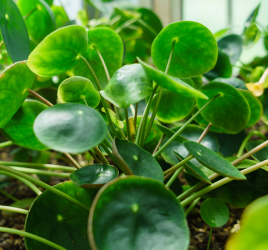How to Remove Poison Ivy, Poison Oak, and Poison Sumac
When we moved into our home, we were aware that the homeowners before us didn’t have a passion for gardening. The yard had been overtaken by weeds, and there was a lot of work to be done. What surprised us the most, was when we discovered 15-foot-tall shrubs of poison ivy running the length of our entire backyard.
We can spot poison ivy in seconds. The shape of the leaves alone is a tall-tell sign of the dangerous weed. While in the past, we knew how to avoid it through hikes, removing it from our own backyard was an entirely different issue.
The Poison Ivy, Poison Oak, and Poison Sumac Rash
Does getting a rash from one of these bad boys bring back hunting memories? Poison ivy, poison oak, and poison sumac are all plants that cause trouble because they can cause an itchy rash upon contact.
On each of these plants is a substance called urushiol which is the specific culprit of this rash. While most of these cases can be treated at home, some people seem to be respond more strongly than others. The rash is not contagious, but if you notice you think you have the rash, or might get the rash, seek medical help.
Poison Ivy
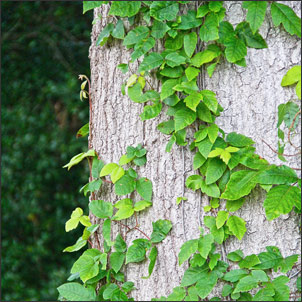
There are different species of poison ivy and that can change the color and shape of the leaves. The color of the leaves will also be shaped by the local environment and the time of year. The plant can even grow yellow or green flowers and have white to green-yellow berries depending on which season it is growing in.
Poison Sumac
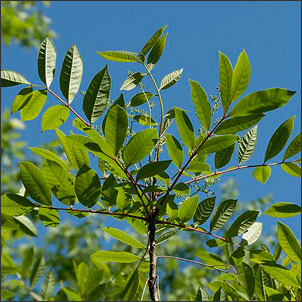
This plant grows deciduous woody shrub or small tree that can grow or small tree that grows from 5–20 feet tall. It can be found in the Eastern and Southeastern United States.
The poison sumac grows best along wet areas. You will notice it often along the banks of the Mississippi River.
To distinguish poison sumac, look for reddish stems containing seven to thirteen leaves arranged is pairs. The leaflets are long ovals and have smooth margins.
Poison Oak
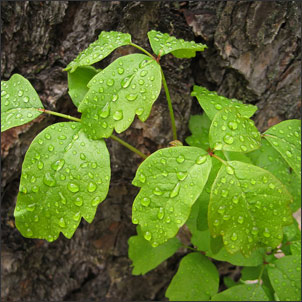
It is a woody shrub or vine that sheds its leaves in winter. In the summer, a leafy shrub exposed to open areas and sunlight can grow from 1 to 6 feet high
The leaf looks similar to poison ivy, as it has clusters of three leaflets. The leaves can resemble a true oak leave which makes it harder to distinguish the difference.
One distinguishing characteristic to determine if it as poison oak or true oak is that true oak leaves grow singly and not in groups.
How to Remove Poison Ivy, Poison Oak, and Poison Sumac
If you notice one of these plants is running crazing around your yard, you will want to remove them as soon as possible. However, make sure to take caution. When not removed properly, you can spread the weed, or worse get yourself covered in a rash.
When removing the poison ivy from our yard, we took to the advice and used Mike McGrath’s Patented Poison Ivy Purging Plan. What is involved in his plan is an organic, self-protective way to remove the plant. If you are not feeling sure about doing it yourself, you can always choose to hire someone to remove it for you.
If you plan to do it yourself here are some great suggestions from The Mike McGrath’s Patented Poison Ivy Plan.
- Wait until right after a heavy rain. This will help you pull the plant out and all the roots. You want to make sure you remove the whole plant, or it will come back. If there is not rain in the forecast, you can water the area yourself.
- McGrath suggests completely protecting yourself from head to toe with heavy boots, protective goggles, long pants, long shirt, and ask for some help. Having someone to assist you as you remove the poison ivy will be helpful.
- McGrath also suggests not using gloves, but use heavy duty bags to place over your hands. This doesn’t mean the thinner supermarket varieties, but the heavier ones. This will allow you to dispose of the bags with the poison ivy and start again with new bags for different areas.
- When you pull the plant out of the ground, place it directly into a trashcan.
- When you are finished have your helper open all the doors of your house for you and go straight to the washer. Run the clothes on a cold rinse cycle first.
- Head straight for the shower and rinse off in cool water without soap and without a washcloth. Water is the best option to wash off any allergies oil that was left. If you add soap and a washcloth it can help to spread to oils. Once you have rinsed off, you can then take a regular shower.
- Go back to the areas that you have eliminated the plants and make sure that there are no new sprouts. You can choose to spray them with an herbicidal soap, or a vinegar based organic herbicide. They do have non-toxic herbicides that have an active ingredient of iron.
- Make sure to never burn poison ivy. This can be very dangerous. The smoke can get down your throat and cause a rash inside your throat. For some this could be fetal.
Take Away
When you are removing any kind of poison ivy, poison oak, or poison sumac, it is important to make sure you are fully protected and that you have plan. Following the Mike McGrath’s plan helped us removing our poison ivy rash free.
If you have any questions or suggestions, please let us know in the comments below. We are also curious to hear about any run ins with these poisonous weeds.

